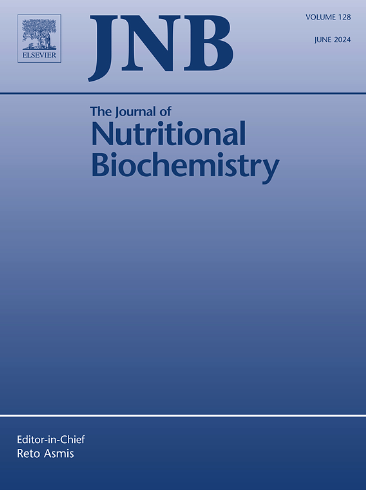The exploration of the relationship between hyperuricemia, gout and vitamin D deficiency
IF 4.8
2区 医学
Q1 BIOCHEMISTRY & MOLECULAR BIOLOGY
引用次数: 0
Abstract
Our study aims to provide evidence concerning the relationship between hyperuricemia, gout and Vitamin D deficiency by analyzing data from Peking Union Medical College Hospital (PUMCH), the National Health and Nutrition Examination Survey (NHANES) database, and through Mendelian randomization (MR) analyses. Sample 1 involved patients from PUMCH (n = 13,532), and sample 2 involved participants from NHANES (Unweighted n = 22,860; weight n = 182,829,142). Logistic regression and restricted cubic spline analyses were applied to assess above relationship. A two-sample MR analysis was performed using the genome-wide association study summary statistics to identify the causal association between gout and 25-hydroxyvitamin D (25(OH)D). The results from both samples confirmed a positive correlation among hyperuricemia, gout and risk of Vitamin D deficiency. The restricted cubic spline showed positive dose-response relationship between uric acid and risk of Vitamin D deficiency and the minimal threshold of uric acid at 307.5 umol/L and 316.1 umol/L, respectively. Mediation analysis in the sample 2 found that about 29.4% of the total effect of gout on Vitamin D deficiency were mediated by serum uric acid, and 37.1% of which were mediated by body mass index.The results of our MR analysis supported a causal association between gout (IVW β(SE), −0.843 (0.337); P = .0123) and 25(OH)D. Sensitivity analysis and genetic risk scores approach confirmed the robustness and reliability of the above findings. Hyperuricemia and gout are both strong indicators of increased risk of Vitamin D deficiency. Findings highlight the causal effects of gout-associated genetic variants on 25(OH)D.
高尿酸血症、痛风与维生素D缺乏关系的探讨。
背景:本研究旨在通过分析北京协和医院(PUMCH)、全国健康与营养调查(NHANES)数据库的数据,并通过孟德尔随机化(MR)分析,为高尿酸血症、痛风和维生素D缺乏之间的关系提供证据。方法:样本1来自PUMCH的患者(n=13,532),样本2来自NHANES的患者(未加权n=22,860;体重n = 182829142)。采用Logistic回归和限制三次样条分析来评价上述关系。使用全基因组关联研究汇总统计进行两样本MR分析,以确定痛风与25-羟基维生素D (25(OH)D)之间的因果关系。结果:两个样本的结果证实了高尿酸血症、痛风和维生素D缺乏风险之间的正相关。限制三次样条曲线显示尿酸与维生素D缺乏风险呈正量效关系,尿酸最低阈值分别为307.5 umol/L和316.1 umol/L。样本2的中介分析发现,痛风对维生素D缺乏症的总影响中,约29.4%是由血清尿酸介导的,37.1%是由体重指数介导的。我们的MR分析结果支持痛风(IVW β(SE), -0.843 (0.337);P = 0.0123)和25(OH)D。敏感性分析和遗传风险评分法证实了上述结果的稳健性和可靠性。结论:高尿酸血症和痛风都是维生素D缺乏风险增加的有力指标。研究结果强调了痛风相关基因变异对25(OH)D的因果影响。
本文章由计算机程序翻译,如有差异,请以英文原文为准。
求助全文
约1分钟内获得全文
求助全文
来源期刊

Journal of Nutritional Biochemistry
医学-生化与分子生物学
CiteScore
9.50
自引率
3.60%
发文量
237
审稿时长
68 days
期刊介绍:
Devoted to advancements in nutritional sciences, The Journal of Nutritional Biochemistry presents experimental nutrition research as it relates to: biochemistry, molecular biology, toxicology, or physiology.
Rigorous reviews by an international editorial board of distinguished scientists ensure publication of the most current and key research being conducted in nutrition at the cellular, animal and human level. In addition to its monthly features of critical reviews and research articles, The Journal of Nutritional Biochemistry also periodically publishes emerging issues, experimental methods, and other types of articles.
 求助内容:
求助内容: 应助结果提醒方式:
应助结果提醒方式:


